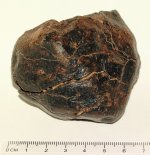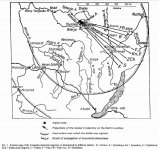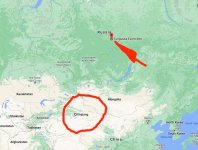okstone
Jr. Member
- Apr 19, 2020
- 32
- 18
- Primary Interest:
- Other



It's not a meteorite. Fractures like that are not at all uncommon on stony meteorites (see below) but they're shock features created on impact. Note the smooth ablation surfaces on the specimen below. Meteorites of this type don't typically have the angular irregular appearance seen on what you found.
View attachment 1868310
There's no reason to single out the Tunguska event either. Plenty of other meteorites to choose from... but this isn't one of them. In any case the Tunguska impactor appears to have suffered almost complete destruction by detonation in the upper atmosphere and no reliably identified remnants have been found to date, apart from microscopic spherules. It also came in from a SE direction, on a path that was nowhere near Xinjiang.
View attachment 1868311 View attachment 1868312
Thank you. I'm confused by its magnetism. Maybe it's a meteor-wrong.
It's not a meteorite. Fractures like that are not at all uncommon on stony meteorites (see below) but they're shock features created on impact. Note the smooth ablation surfaces on the specimen below. Meteorites of this type don't typically have the angular irregular appearance seen on what you found.
View attachment 1868310
There's no reason to single out the Tunguska event either. Plenty of other meteorites to choose from... but this isn't one of them. In any case the Tunguska impactor appears to have suffered almost complete destruction by detonation in the upper atmosphere and no reliably identified remnants have been found to date, apart from microscopic spherules. It also came in from a SE direction, on a path that was nowhere near Xinjiang.
View attachment 1868311 View attachment 1868312
